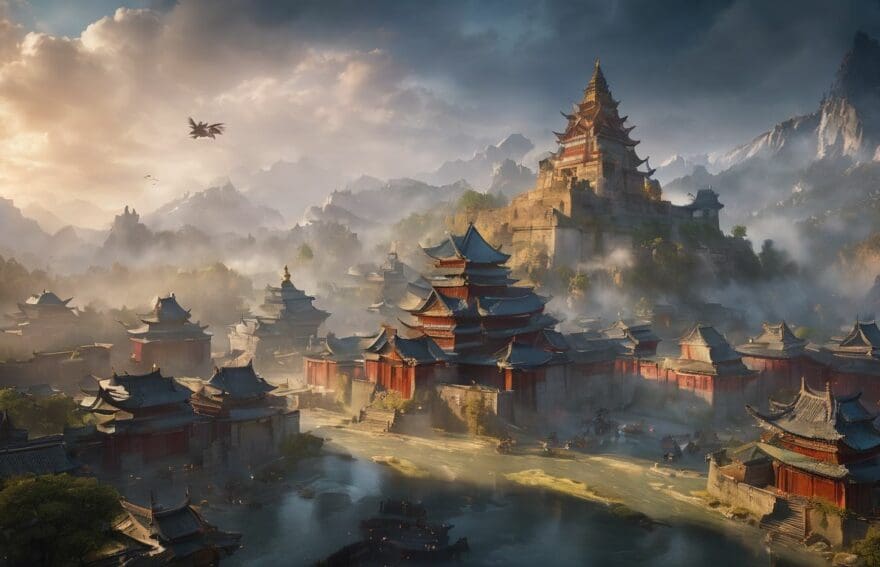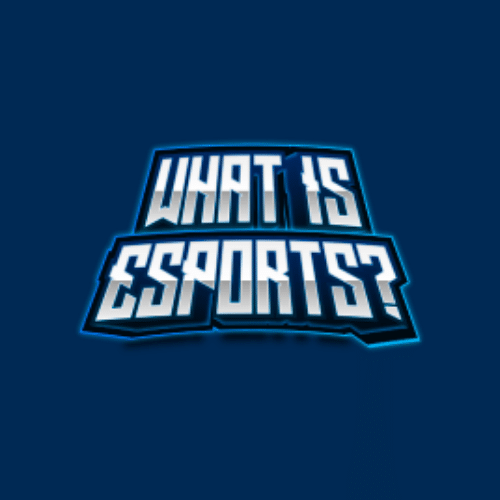Dota 2: The Evolution of Strategy and Team Play

Updated On: October 31, 2025 by 
Maintaining pace with the dynamic strategies of Dota 2 can be quite the challenge; trust us, we’ve needed to stay alert and adaptable as the game continues its evolution – a nod to its storied beginnings as a humble Warcraft 3 mod.
In this blog post, we’ll navigate you through the twists and turns in gameplay and team dynamics that have forged Dota 2 into the complex tapestry of strategy it is today. Immerse yourself with us on a captivating excursion into finesse, camaraderie, and tactical genius!
Overview of Dota 2
Dota 2 is a popular multiplayer online battle arena (MOBA) game that originated from a Warcraft mod. The game features different modes and objectives, and it can be accessed on various platforms for gamers to enjoy.
Origins and development
We’ve witnessed Dota 2’s remarkable journey from a humble mod in Warcraft 3 to its current status as the titan of esports. Its roots lie deep within the real-time strategy genre, where it started as a community-created modification called “Defense of the Ancients.” The passion and dedication of its early developers and player base paved the way for Valve Corporation’s transformation of this mod into a standalone title that commands a global audience.
As game experts and novices alike know, every great tale has its beginnings, and Dota 2 is no exception. This evolution was not just in name or form; it represented an industry-defining shift towards team-based competitive gaming.
Pioneering strategic depth and cooperative gameplay, Dota 2 invites players to navigate complex decisions while mastering over 100 unique heroes. With each update, new layers unfold, ensuring that both newcomers and veterans always have fresh challenges to tackle as they forge their paths to victory.
Moving forward from how the game originated, let’s explore further into different ways you can dive into battle with various game modes..
Game modes and objectives
Dota 2 offers a variety of game modes, providing players with different objectives and challenges. The main mode is “All Pick,” where teams select heroes and aim to destroy the opposing team’s Ancient.
In “Captain’s Mode,” teams take turns choosing and banning heroes to create strategic compositions. Additionally, there are modes like “Random Draft” and “Single Draft” that add an element of unpredictability to hero selection.
Each mode presents unique objectives, requiring players to adapt their strategies accordingly.
In Dota 2, the main objective across all game modes is to work together as a team to outmaneuver the opposition and destroy their base while protecting your own. Whether it’s securing map control or coordinating successful team fights, achieving victory relies on effective teamwork and strategic decision-making.
Platforms and accessibility
Dota 2 is accessible on various platforms, including Windows, macOS, and Linux. Players can download the game for free from the Steam platform and enjoy regular updates and patches that ensure a smooth gaming experience.
This accessibility allows gamers to immerse themselves in the evolving strategies and team play dynamics of Dota 2 across different operating systems without any barriers.
With cross-platform availability, players can connect with other enthusiasts from around the world, fostering a diverse gaming community where they can share insights, tactics, and experiences.
In addition to PC access, Valve Corporation has also made efforts to make Dota 2 accessible on mobile devices through companion apps and supportive features. Embracing various platforms ensures that gamers of all backgrounds have opportunities to engage with Dota 2’s strategic evolution seamlessly.
The Basics of Gameplay
The map in Dota 2 is divided into three lanes, each with towers and barracks that must be destroyed to win the game. Heroes have different attributes and abilities that can be enhanced with items, allowing for a wide variety of play styles and strategies.
The game mechanics include last-hitting creeps for gold, denying allied creeps to deny experience points to enemies, and using teleportation scrolls to move around the map quickly.
Map structure
The Dota 2 map is divided into three main lanes: top, middle, and bottom. Each lane is flanked by a dense forest, providing cover for tactical movements and surprise attacks. At the heart of the map lies the river that divides it horizontally, creating strategic choke points and important objectives such as Roshan’s lair.
Additionally, neutral camps are scattered throughout the jungle areas on either side of the map, which can be cleared by players to gain experience and gold. The layout of the map influences team strategies and rotations while also shaping hero compositions and item choices.
Teams must carefully consider how they allocate their resources across these different sections of the map in order to maintain control over key locations like towers and outposts.
Heroes and attributes
- Heroes possess specific roles such as carry, support, or initiator, influencing the strategic depth of team composition.
- Each hero has distinct attributes including strength, agility, and intelligence which directly impact their strengths and weaknesses in combat.
- Hero abilities are designed to complement their attributes, providing a wide range of offensive, defensive, and utility skills for players to master.
- The game’s strategic depth is enhanced by the vast array of items and equipment that can be tailored to enhance a hero’s capabilities during battles.
- Adapting hero selections and optimising item usage based on the opposing team’s strategy is crucial for making tactical decisions during gameplay.
Hero abilities
After understanding the fundamental aspects of heroes and their attributes, it is essential to delve into the unique abilities that each hero possesses in Dota 2. These abilities are pivotal in shaping the dynamics of the game and have a significant impact on strategic decision-making. Here’s an exploration of hero abilities in Dota 2:
- Diverse Skill Sets: Each hero in Dota 2 possesses a set of four distinct abilities, including three basic abilities and one ultimate ability.
- Active and Passive Abilities: Heroes have both active abilities, which require manual activation, as well as passive abilities, which are constantly effective without needing to be activated.
- Ability Synergy: Many heroes have cohesive ability sets that work together synergistically, allowing for devastating combinations and versatile playstyles.
- Unique Ultimates: Ultimate abilities are powerful and game-changing skills that define each hero’s identity and playstyle, often significantly impacting team fights and overall strategy.
- Customisation through Talents: As heroes level up during a match, they gain access to talent trees that allow players to further customise their hero’s strengths and playstyle.
- Disabling and Nuking Abilities: Heroes may possess crowd control or disabling abilities that can hinder opponents’ movements or powerful nuking spells to deal significant burst damage.
- Affecting Game Dynamics: Hero abilities contribute to the dynamic nature of gameplay, requiring quick thinking and adaptability from players as they encounter various heroes with unique skill sets.
- Strategic Implementation: Understanding how to time, position, and utilise these abilities effectively is crucial for achieving success in team fights and securing objectives throughout the game.
Items and equipment
In Dota 2, items and equipment play a crucial role in enhancing a hero’s abilities and survivability. Players can purchase a variety of items using in-game currency to customise their heroes based on the current game situation.
- Each hero has specific recommended items that complement their abilities and roles, such as damage – dealing items for carry heroes or support items for utility heroes.
- Items are classified into categories like consumables, basic, upgraded, and secret shop items, offering diverse benefits including health regeneration, mana restoration, damage amplification, crowd control effects, and armour bonuses.
- The progression of item acquisition is vital for players to increase their effectiveness throughout the game. It involves careful decision-making to prioritise which items will give them an advantage in combat and map control.
- Certain powerful late-game items can significantly alter the course of battles, with game-changing effects like spell immunity, life-steal, evasion, or increased movement speed.
- Items can be combined or disassembled to create more potent upgrades or to repurpose components according to the evolving needs of the team strategy.
- Effective utilisation of gold earned from objectives and enemy takedowns is essential for obtaining key items that provide advantages during crucial team fights and objective sieges.
- A deep understanding of item synergies and counter – items is fundamental for strategic gameplay optimisation and adapting to various enemy compositions encountered throughout a match.
- As players progress through matches, they must continuously evaluate their own itemisation choices while considering the opposing team’s composition and power spikes to ensure they remain relevant in both defence and offence scenarios.
Game mechanics
Each hero’s abilities and attributes contribute to the game mechanics in Dota 2. Players must strategically use these unique skills to outmaneuver their opponents and achieve objectives on the map.
Understanding the importance of items, equipment, and team coordination is essential for mastering the tactical decision-making required to succeed in this fast-paced multiplayer online battle arena (MOBA) game.
The game mechanics in Dota 2 are designed to provide an immersive experience that challenges players at every turn. From navigating the intricacies of each hero’s abilities to making split-second tactical decisions during team fights, Dota 2 demands strategic thinking and quick reflexes from players.
By understanding these fundamental mechanics, both novices and experts can delve deeper into the evolving strategies of this captivating esport.
Evolution of Strategy in Dota 2
In the evolution of strategy in Dota 2, we will explore the early metagame and trilane strategy, as well as the focus on map control and team coordination. We will also discuss how strategies have adapted to new hero releases over time.
Early metagame and trilane strategy
In the early years of Dota 2, teams focused on developing metagame strategies to gain an advantage over their opponents. The concept of trilane strategy emerged as a crucial element in optimising map control and securing farm for core heroes.
This strategic approach involved sending three players to one lane to dominate the opposition, creating space for other teammates across different areas of the map. Teams continuously refined these early metagame tactics, laying the foundation for future strategic innovations in Dota 2.
Adapting to new hero releases and patch updates became essential elements in shaping early metagame strategies. As more heroes with unique abilities were introduced into the game, teams explored innovative ways to incorporate them into their gameplay tactics.
Focus on map control and team coordination
Effective map control and team coordination are fundamental aspects of mastering Dota 2 gameplay. By strategically positioning wards, towers, and heroes across the map, teams can gain vision and deny crucial information from their opponents.
This allows for better decision-making and minimises the risk of surprise attacks or ganks. Additionally, coordinated movements and rotation among teammates enable efficient resource allocation and pressure on objectives.
Teams that excel in map control and coordination often dictate the pace of the game, putting themselves in advantageous positions to secure objectives and win team fights.
In Dota 2, successful coordination not only involves tactical decision-making but also requires clear communication within a team. While individual skill is important, effective teamwork ensures that players synergise their hero abilities to execute impactful plays during critical moments.
Adaptation of strategies to new hero releases
As teams focused on map control and coordinated their efforts, Dota 2 continued to evolve with the release of new heroes. Each new hero brought a unique set of abilities and playstyles, prompting players to adapt their strategies accordingly.
With over 100 heroes available, the game constantly presented fresh challenges as teams strategised to counter opponents’ picks and effectively utilise new additions to their rosters.
The evolution of experience points and tactical decision-making also played pivotal roles in shaping how players adapted and optimised their strategies in response to these releases.
The Role of Team Play in Dota 2
Importance of communication and teamwork, roles and responsibilities within a team, coordination and execution of team fights are crucial in Dota 2. Interested to know more about the evolution of strategy and team play? Keep reading!
Importance of communication and teamwork
Effective communication and teamwork are pivotal in Dota 2, where coordination between team members can make or break a game. Each player’s ability to communicate their intentions clearly and concisely is crucial for devising strategies and executing them efficiently.
Additionally, timely information sharing about opponents’ movements across the map enhances the team’s overall awareness, paving the way for tactical decision-making on the fly.
In Dota 2, successful teamwork hinges on each player understanding their role within the team dynamic. By synergising hero abilities and coordinating attacks during critical moments, teams can secure objectives while thwarting opposition advances.
Roles and responsibilities within a team
- Carry: The carry player focuses on accumulating gold and experience in the early game and becomes the primary damage dealer in the later stages.
- Support: Supports assist their teammates by providing vision, crowd control, healing, and sacrificing their own resources for the benefit of the team.
- Midlaner: The midlaner typically plays a hero with strong solo potential and gains levels and gold quickly to have a significant impact in mid-game fights.
- Offlaner: This player holds the offlane position, aiming to disrupt the enemy’s safe lane farm while gaining enough experience and gold to become a frontline presence in team fights.
- Jungler: The jungler farms neutral creeps in the jungle to provide additional resources for their team or create pressure across multiple lanes.
Coordination and execution of team fights
As we delve into the heart of team dynamics in Dota 2, it’s essential to recognise the pivotal role of coordination and execution during team fights. Team fights are high-stakes moments where strategic positioning, timing, and communication determine success or defeat.
Every player must be aware of their hero’s abilities and how they complement those of their teammates. Cooperation is crucial as teams look to play off each other’s skills, effectively chaining together abilities for maximum impact.
Quick decision-making and adaptability also come into play as the fluid nature of team fights demands split-second choices that can change the course of a match.
Adapting to feedback from teammates and having a clear understanding of your role within a team fight are key aspects that contribute to successful execution. Each player should have a good grasp on when to initiate an engagement or pull back based on the situation at hand.
The Evolution of Dota 2 as an Esport
The Evolution of Dota 2 as an Esport has seen a growing popularity and community involvement, with major tournaments like The International drawing in huge viewership. The impact of evolving strategies on competitive play has been significant, shaping the landscape of professional gaming.
Growing popularity and community involvement
Dota 2 has seen a surge in popularity, steadily growing into one of the most prominent esports globally. The game’s massive community involvement has played a significant role in its rise to fame.
With ongoing discussions and analysis of gameplay strategies and team dynamics, players are fully engaged in the evolution of the game as they strive to stay competitive. Moreover, Valve Corporation’s consistent support and development have contributed greatly to Dota 2’s success and appeal.
As a result, Dota 2 offers an inclusive platform for both seasoned gamers and novices to come together, share insights, and enhance their gaming experience through active participation in the community.
The International and other major tournaments
The International, hosted annually by Valve Corporation, stands out as Dota 2’s premier tournament, attracting the best teams from around the world. With huge prize pools and intense competition, it serves as a focal point for the game’s evolution and showcases innovative strategies.
Beyond The International, other major tournaments like DreamLeague and ESL One provide additional platforms for teams to test their skills and tactics in high-stakes matches. These events offer players an opportunity to demonstrate their expertise on a global stage while captivating audiences with thrilling displays of teamwork and strategic decision-making.
As esports continue to gain momentum, major tournaments such as The International are pivotal in shaping Dota 2’s competitive landscape. They not only spotlight top-tier gameplay but also drive ongoing discussion and analysis within the community surrounding evolving meta strategies and team dynamics.
Impact of evolving strategies on competitive play
Evolving strategies in Dota 2 have a significant impact on competitive play. As the metagame shifts and new heroes are introduced, teams must continuously adapt their tactics to stay ahead.
The ability to innovate and execute effective game plans is crucial for maintaining an edge over opponents. This dynamic environment keeps players constantly engaged, requiring them to master new strategies and refine existing ones.
Adapting to evolving strategies enhances the overall competitiveness of Dota 2, fostering a vibrant gaming scene that rewards creativity and strategic prowess. By staying agile and open-minded, players can leverage emerging tactics while honing their skill set for maximum impact in high-stakes matches.
Embracing change is essential for success in this ever-evolving competitive landscape.
The Future of Dota 2 Strategy
Speculation on potential future developments in Dota 2 strategy, including the impact of new hero releases and ongoing shifts in metagame. Constant evolution and adaptation are expected to continue shaping the competitive landscape of the game.
Speculation on potential future developments
Looking ahead, we anticipate that Dota 2 will continue to evolve as new heroes, game mechanics, and strategies are introduced. The potential for further innovation in hero abilities and equipment could lead to an even wider range of viable strategies.
Alongside this, ongoing updates and patches from the game’s developer, Valve Corporation, are likely to shape the future landscape of gameplay. Additionally, with advancements in technology and gaming platforms, players may have access to new features and modes enhancing their overall experience.
As the esports scene continues to grow rapidly, it is feasible that Dota 2 will witness increased community involvement and spectatorship. We also foresee efforts towards improving accessibility for newer players while maintaining a high skill ceiling for competitive play.
Constant evolution and adaptation in the game
Strategies in Dota 2 are always evolving, driven by new hero releases and game updates. Players need to constantly adapt their gameplay to stay competitive, mastering the latest meta and refining their tactics.
The dynamic nature of the game encourages ongoing development of innovative strategies, creating an ever-changing landscape that keeps players on their toes.
Adapting to new challenges is a fundamental aspect of Dota 2’s appeal. As the game continues to evolve, players are required to stay flexible and open-minded, embracing change as an opportunity for growth rather than a hurdle to overcome.
Conclusion
In conclusion, the evolution of Dota 2 strategy and team play has been a dynamic journey. Players have adapted to new challenges with evolving strategies and teamwork, shaping the game’s competitive landscape.
The ongoing support and development by Valve Corporation continue to drive the game’s popularity as a leading esport. As the meta constantly shifts, players will need to remain agile in their tactical approach for sustained success in Dota 2.
FAQs
1. What is Dota 2 and how does it relate to MOBA games?
Dota 2 is a multiplayer online battle arena (MOBA) game that features strategic decision making in team-based PvP matches.
2. How has strategy evolved in Dota 2 gameplay?
Over time, the strategy in Dota 2 has become more complex with players focusing on tactical decision-making and using unique hero abilities for an advantage.
3. Did Dota 2 start as a Warcraft mod?
Yes, originally, Dota 2 began as a mod for the real-time strategy game Warcraft before evolving into its own standalone title.
4. How important is teamwork in playing Dota 2?
Teamwork is crucial in achieving victory in Dota 2 since the game requires player coordination and team-based gaming strategies to succeed against opponents.
5. Why is competitive gaming evolution significant to Dota 2 players?
The evolution of competitive gaming pushes both casual and professional players to refine their skills, adapt new tactics, and stay up-to-date with the latest game development changes within the online gaming community.









